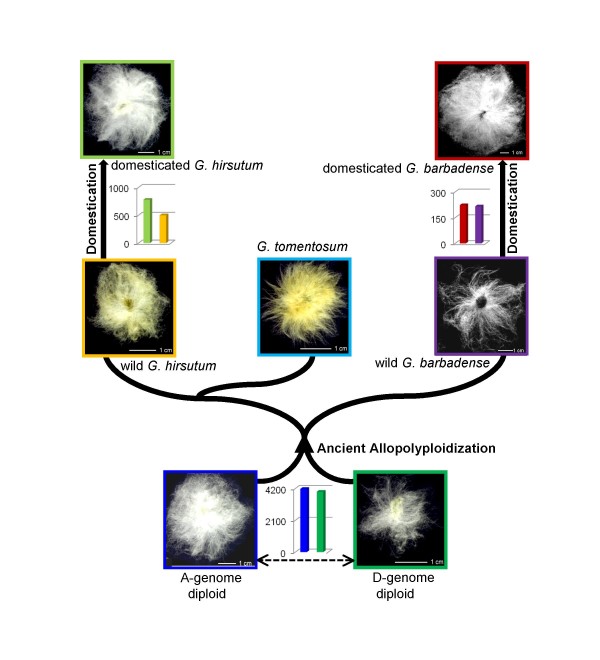Figure 1.
Evolutionary history of diploid and allotetraploid cotton (Gossypium). Phylogeny of the genus is shown, with the history of repeated domestication at both the diploid (n = 13) and polyploid (n = 26) levels. The ancestral A- and D-genome diploids are inferred to have diverged from a common ancestor ~5–10 million years ago, prior to genomic merger in a common polyploid nucleus ~1–2 million years ago [32]. The newly evolved allopolyploid lineage subsequently diversified into five species (three used for microarray analysis are shown). Two allotetraploid species, G. hirsutum (source of 'upland cotton') and G. barbadense (source of 'Pima cotton'), and the diploid species G. arboreum were domesticated by humans within the past ~7000 years [35,36]. In the present study, we used models of the two progenitor diploids, G. arboreum (A-genome) and G. raimondii (D-genome), and both wild and domesticated forms of G. hirsutum and G. barbadense. We also included G. tomentosum, a wild allopolyploid from Hawaii. A representative image of a single seed at maturation is also shown for each species, with attached trichomes ("cotton fiber") with average fiber length (G. raimondii = 1.6 cm; G. arboreum = 3.0 cm; wild G. hirsutum = 2.0 cm; domesticated G. hirsutum = 3.9 cm; wild G. barbadense = 2.4 cm; domesticated G. barbadense = 4.3 cm; G. tomentosum = 1.2 cm) (modified from Applequist et al. [31]. Arrows denote microarray comparisons between species, with graphs designating the number of differentially up-regulated genes (P < 0.05 and FDR < 0.01) in each species, using the same color codes as in the seed image outlines.

